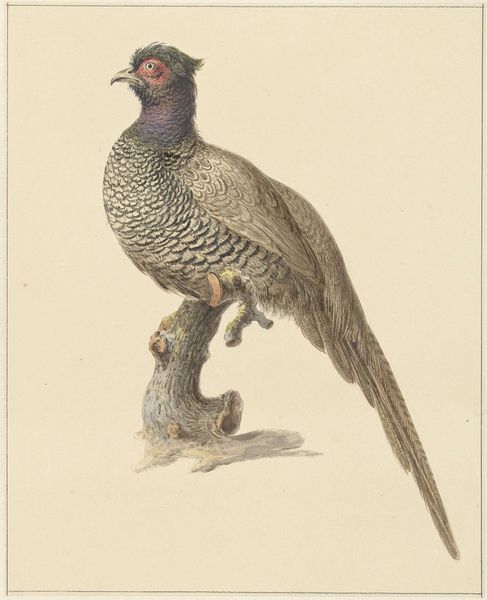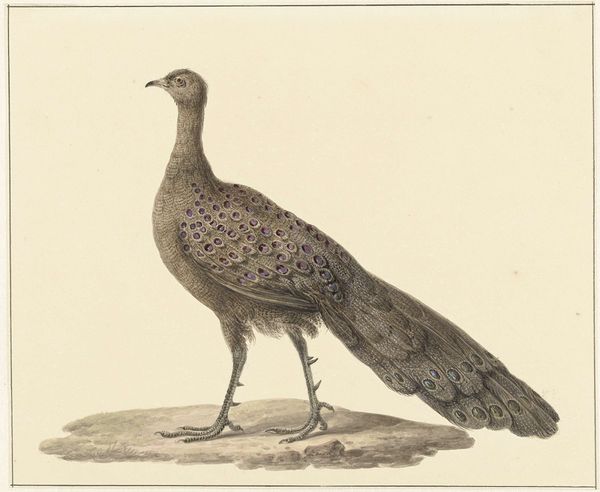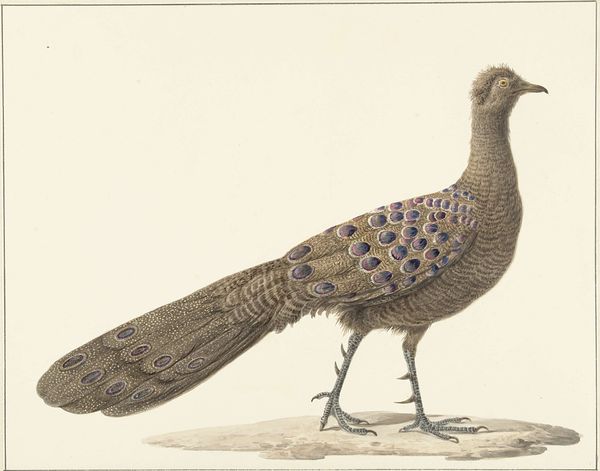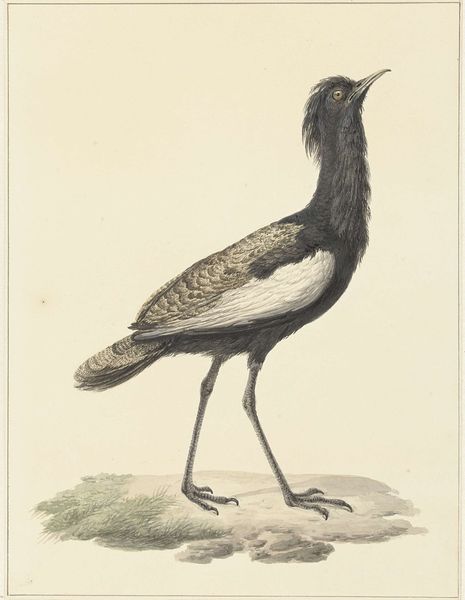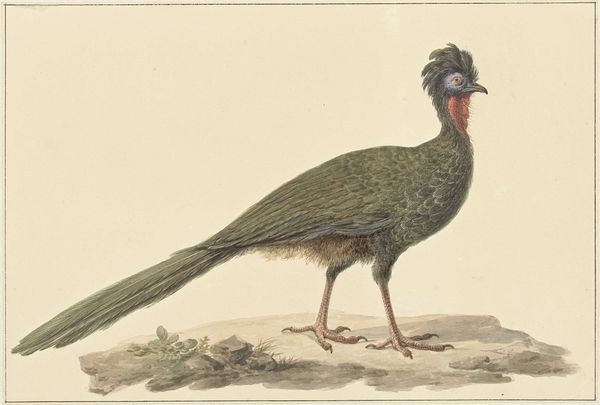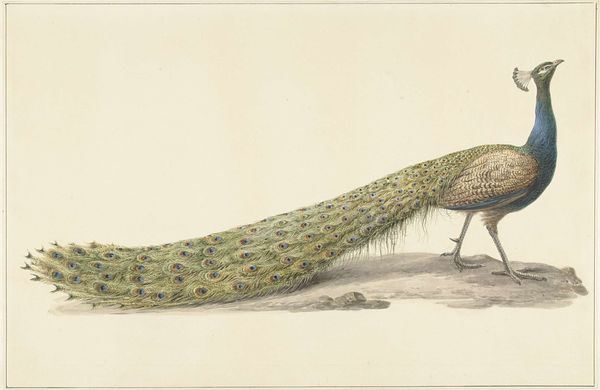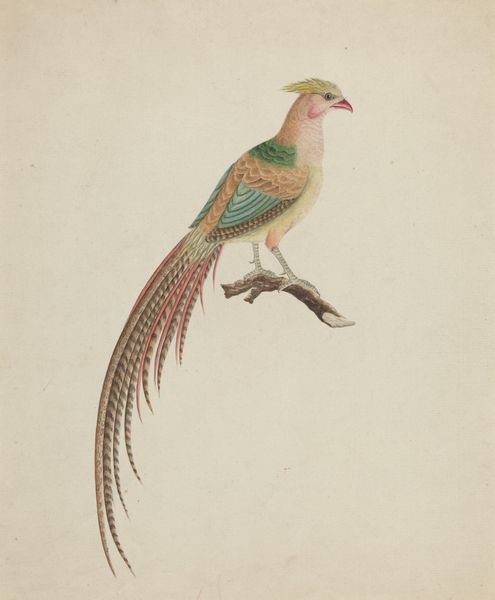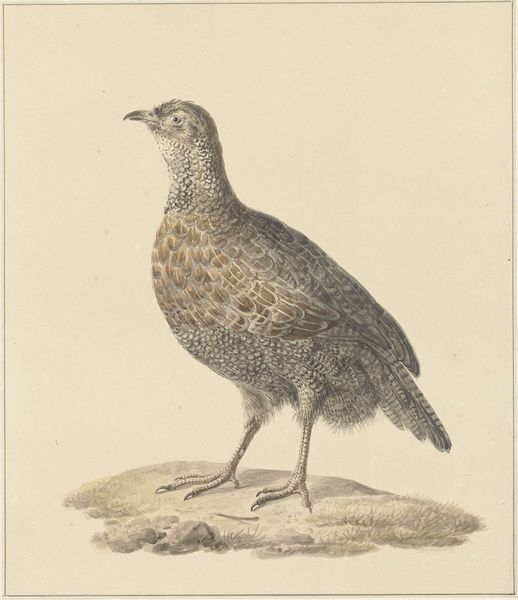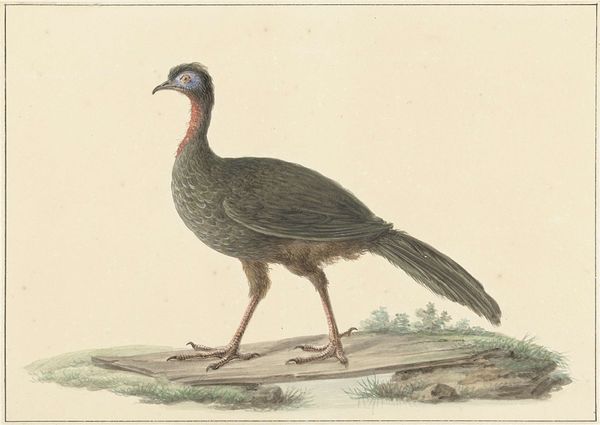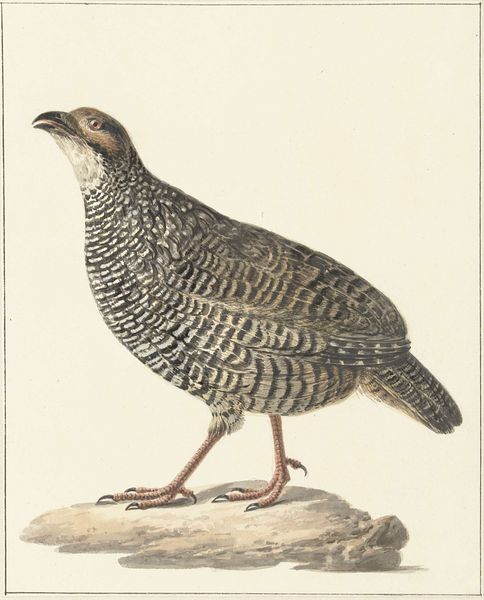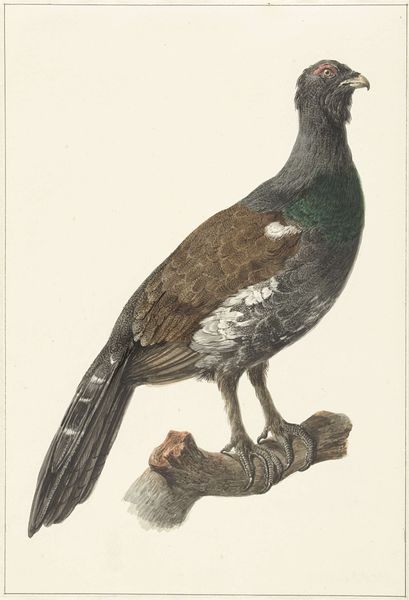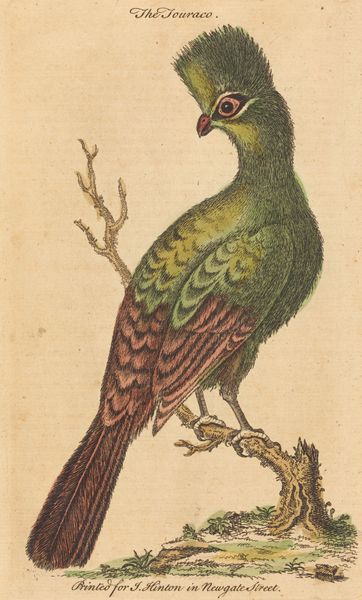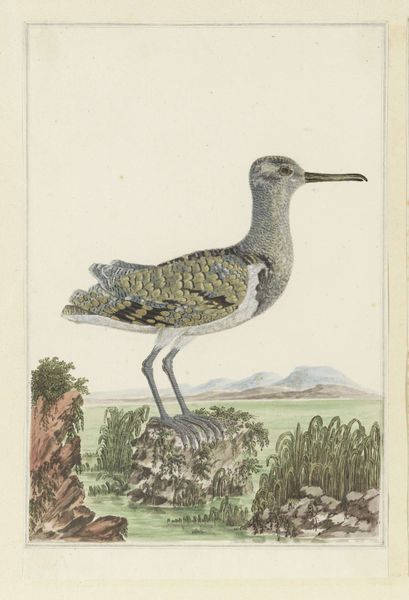
drawing, watercolor
#
naturalistic theme
#
drawing
#
animal
#
botanical illustration
#
watercolor
#
botanical drawing
#
watercolour illustration
#
botanical art
#
watercolor
Dimensions: height 259 mm, width 446 mm
Copyright: Rijks Museum: Open Domain
Curator: Standing before us, we have "Fazant," a delicate watercolor drawing likely completed sometime between 1759 and 1842, attributed to Pieter Pietersz. Barbiers. Editor: What a stunning creature! It exudes an almost melancholic poise, don't you think? The long tail droops so elegantly, but also suggests a kind of weary grace. Curator: Indeed. I find myself drawn to the almost scientific detail in Barbiers' depiction. You can practically feel the texture of the feathers. It raises the question: was this made purely for aesthetic pleasure, or perhaps as a study aid? Watercolour would be such a useful and transportable tool for that. Editor: The colours also speak volumes. That flash of blue on the neck, set against the browns and reds... it’s almost heraldic. Pheasants, particularly in Dutch Golden Age paintings, were often symbols of wealth and the spoils of the hunt. Is Barbiers referencing that, or perhaps subverting it in some way? Curator: A pertinent question! It's interesting how this image straddles different traditions—scientific illustration, fine art, even a kind of applied art if you consider its potential use as a model for tapestries or other crafts. The materials themselves—paper, pigments, brushes—all suggest a particular mode of production and consumption. Where would Barbiers even source these materials, and how might they have shaped his work? Editor: Looking at its beak, the direction of its gaze, its a symbol of freedom and beauty and this image holds a stillness, a captured moment which transcends any immediate cultural association with hunting. It reminds us of the fleeting nature of beauty, and perhaps even the responsibility we have towards these creatures. Curator: So, an image laden with material and symbolic considerations! It began, possibly, as a study, a mere record of an encounter with nature, but its survival suggests it has other stories to tell of culture, social status and memory, through line and color. Editor: I agree. It's in those layers of meaning and the visible human crafting this study that resonates profoundly.
Comments
No comments
Be the first to comment and join the conversation on the ultimate creative platform.
